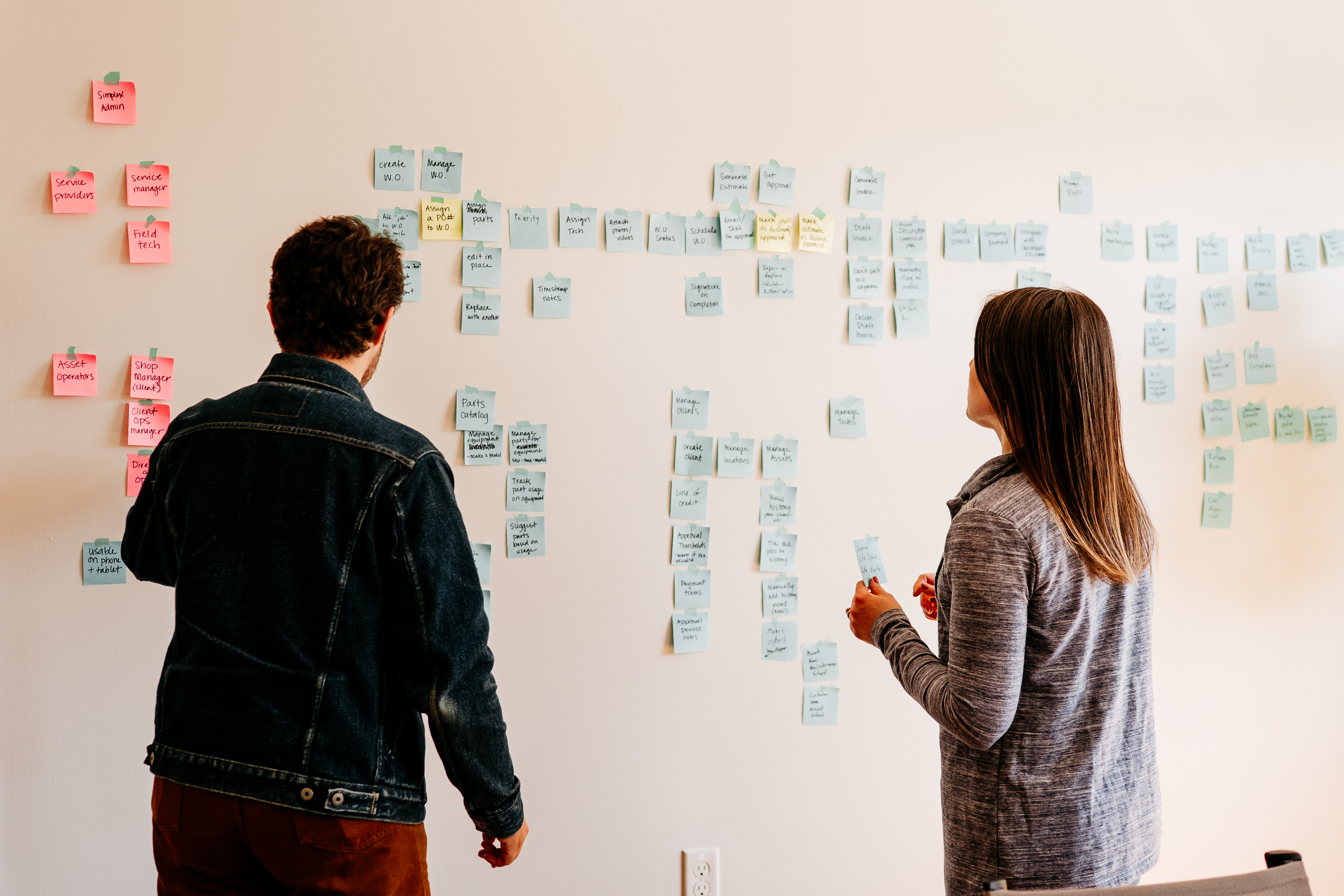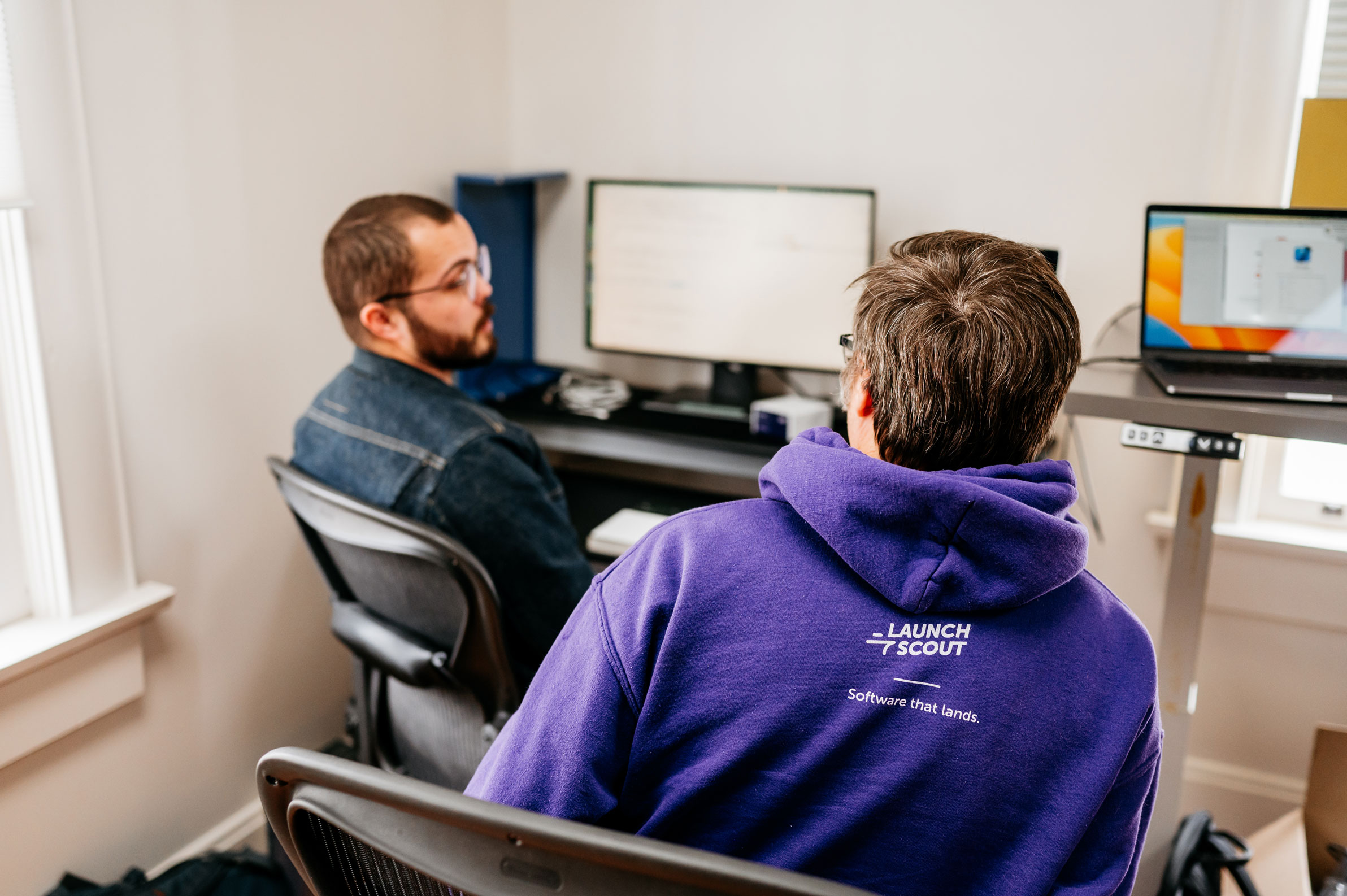Our Process
Navigate software like never before.
Building custom software can feel like venturing into uncharted territory–a little scary. But it doesn’t have to. Our proven process provides the trail markers, with our team as your guides, to keep your project on the path to success.

Our Approach
We’re in this with you, side-by-side, to see it through
We’re going to to do whatever we can to launch you to success. For us, it's not about the code written, it's about the problems solved. And every day we're making strategic design and technical decisions—both big and small—together with you to discover the right solutions for your users and your bottom line combined.
1. Pre-Project Exploration
What problem are you trying to solve?
2. Discover Your Roadmap
What are your goals and budget?
3. Build in iterations
How will you actively engage?

4. Repeat 2 & 3
What do we do next?
1. Pre-Project Exploration
At Launch Scout, we’re hyper-focused on solving problems. That’s why, before you even hire us, we’re already looking for possible solutions. We’ll start with a conversation to answer questions like: How long has this problem been going on? What would be the impact of solving this problem? If the problem isn’t solved, what would happen? What solutions have you already tried? We’ll use this time to better understand your problem, how custom software fits into the equation, and if we’re the right team for the job.

2. Discover Your Roadmap
If the glass slipper fits, we move into Discovery. We’ll start by gaining shared understanding. (You’ll hear us say that phrase a lot.) That means we all are in alignment about your business, your goals, your users, what to build, etc. We’ll build a story map together, set milestones, maybe test some assumptions through code, or even build a low-fidelity prototype. We’ll put together a project roadmap that visualizes which milestones we believe we should accomplish first, next, and so on, and an appropriate budget to tackle each.
This plan isn’t set in stone, though—it’s preliminary. As we reach each milestone, we’ll have learned a lot. We’ll reevaluate the roadmap as we go to make sure that we are still headed in the right direction given what we’ve learned together.
User Story Mapping
User Story Mapping is one of the most powerful tools in our toolkit because it’s the fastest way we’ve found to build shared understanding. We start by understanding the problem, your users, and their goals. Then we follow the natural flow of the user journey to capture a visual representation of it that everyone understands.
Learn more about User Story MappingPrototyping
Sometimes the problem space is complex enough that we need to go a step further to gain more clarity. Enter prototyping—another tool in our toolkit that allows us to tangibly see the information architecture and flow throughout the product. We’ll use a design tool to put together a low-fidelity prototype that better illustrates the solution we have in mind.
Read about what we learn by prototypingControl Spend and Scope
We budget by pulling from our collective decades of experience and focusing on your goals, not a set list of features. We estimate how much it will take to accomplish those goals and then respect that budget, adjusting scope as we learn new information, and consistently ask ourselves (and you), “How can we maximize value with the remaining budget?”
Learn how we manage your budget3. Build in Iterations
This is where things get real. One thing to keep in mind: There is always more to build than time and money allow—we’ve found that to be true of every project we’ve encountered. And that’s okay! We’ll help you build a prioritized plan for successfully reaching our first milestone. Then, we build your product in iterative cycles, talking with you daily to review our progress, ask questions, and adjust the plan as needed.
Our iterations include defining, creating, refining, and releasing to production as often as possible—sometimes daily. This allows us to stay on track, quickly adapt to feedback and new information, and launch the best product possible. That’s kinda jargon-y, so here’s what that actually looks like:

Define
Is this the next most important thing to build? What does it need to allow the user to do?

Create
Craft custom software following Agile methodologies, the Design Sandwich, and Test Driven Development.

Refine
Review what we have built with you (and your users), get feedback, and adjust accordingly.

Release
Push new features to production to quickly provide value to your users

Daily Touchpoints
Did you catch that we want to talk to you daily? Hopefully you did, and hopefully that doesn’t make you cringe. You will likely want to talk to us this often as well. We value and respect constant, open communication and tight feedback cycles. We don’t want to make an assumption about something, build working software based on that assumption, wait a week to find out that we were wrong and have to redo that work. It is expensive and we don’t like wasting time and money. We want to fail fast and course-correct even faster. A daily 15-minute standup allows that to happen.

The Design Sandwich
You may have noticed that we don’t have a specific design phase of our process. At Launch Scout, Design and Development work hand-in-hand on each feature being built. We like to call it the Design Sandwich. As each feature is started, design and development collaborate through the UX design, development, and UI design to ensure we’re delivering the best solution for you.
Learn more about Design and Development working together4. Repeat
After we reach the first milestone, we’ll repeat stages two and three for each milestone that follows. We revisit the roadmap to ensure what we initially planned still makes sense, adjust accordingly, detail what needs to be built to accomplish it, and then design and build the next iteration of your product.
Their communication and dedication to involving the client in the entire process are most impressive. We have daily morning standups where we go over the progress from the previous day, the progress we want to make on this day, and any updates, shifts, or pivots that we want to make.Founder & CEO, EdTech Startup (Review from Clutch.co)

A look toward the future
As we near the end of your roadmap, we know from experience that your wish list will likely have gotten longer since we started building and learning from your users. Launch Scout can help you draw the line in the sand where we wind down active feature development and step away for a bit. We’ll help you figure out what the future looks like—whether that’s picking up active feature development again, moving into a maintenance phase of work, or helping you to grow your development team in-house—our goal is to launch you and your product to success.